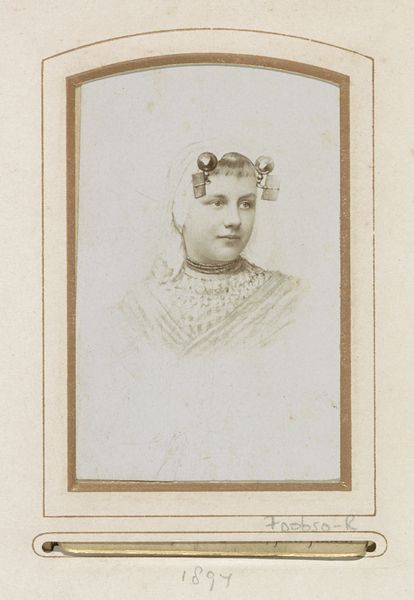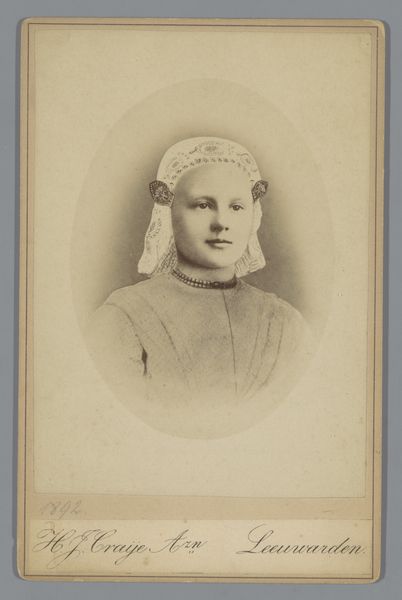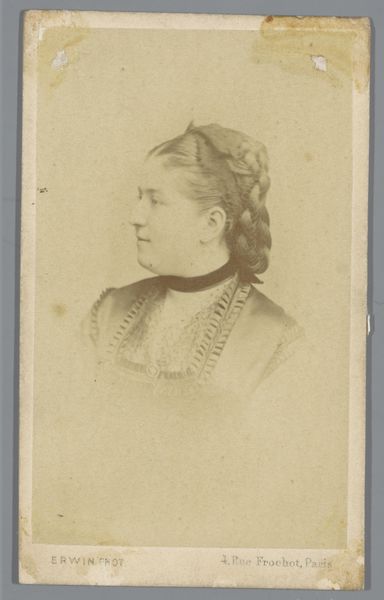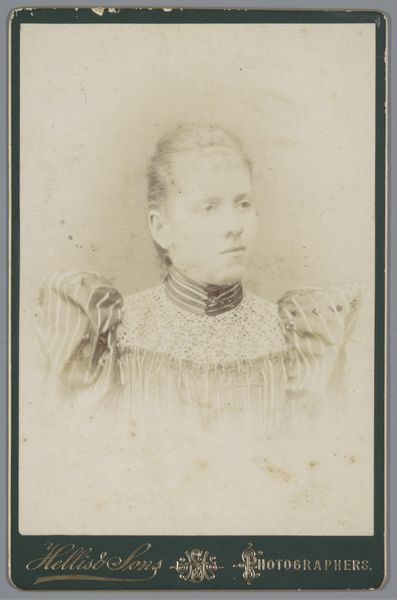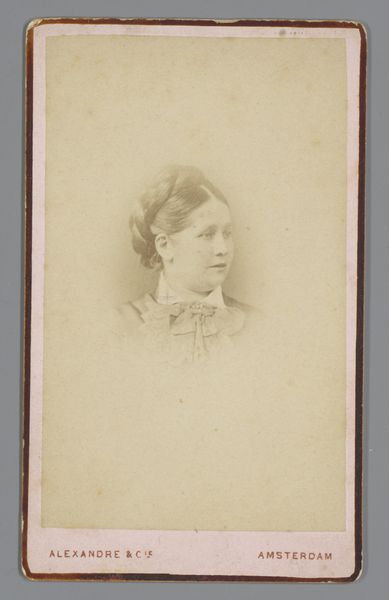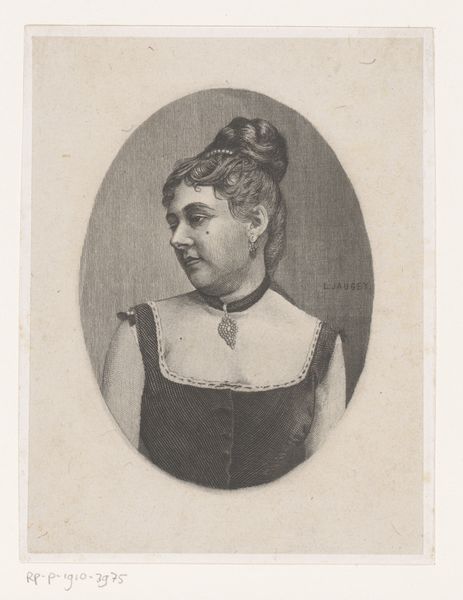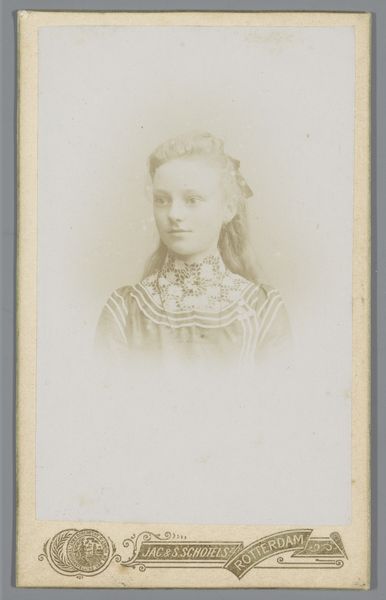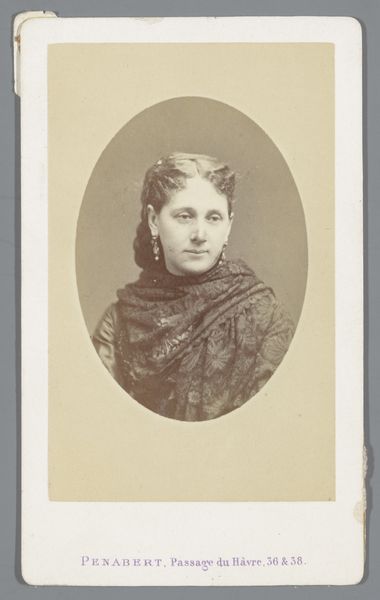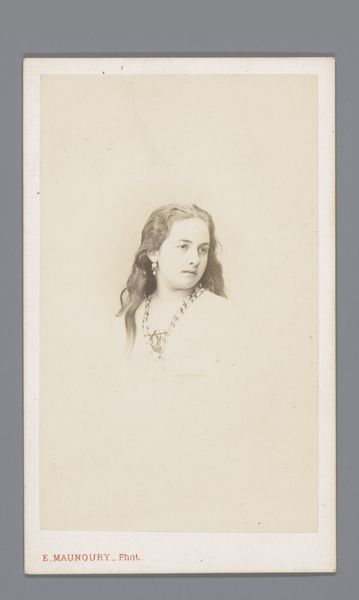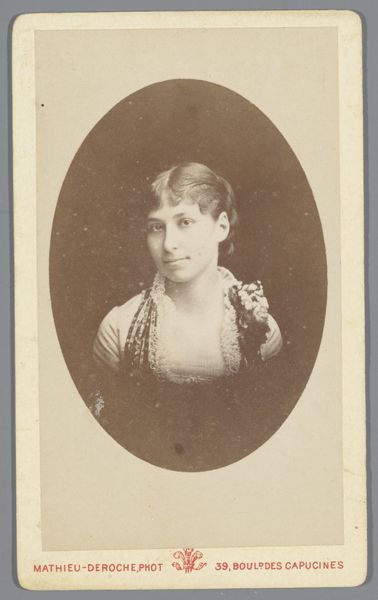
Portret van koningin Wilhelmina, met muts volgens de klederdracht van Zuid-Beveland Possibly 1894 - 1898
0:00
0:00
print, photography
#
portrait
#
dutch-golden-age
# print
#
photography
#
coloured pencil
#
academic-art
#
watercolor
#
realism
Dimensions: height 163 mm, width 106 mm
Copyright: Rijks Museum: Open Domain
Curator: Let's consider this captivating portrait—likely from between 1894 and 1898—depicting Queen Wilhelmina in South Beveland traditional attire, captured by Antoine Johan Marinus Steinmetz. It now resides within the esteemed collection of the Rijksmuseum. Editor: My initial reaction? It’s dreamlike, almost ephemeral. The soft focus gives her an air of fragile innocence, despite being the Queen! Like a whispered secret from a sepia-toned memory. Curator: Indeed. The work resonates within a tradition of royal portraiture while engaging with notions of Dutch regional identity. We see Wilhelmina presented not merely as royalty, but embedded within a very specific cultural context. This situates the monarchy within the broader socio-cultural fabric of the nation. Editor: I love that it makes her relatable, somewhat. The traditional garb contrasts beautifully with the inherent authority we expect from a royal portrait. Makes you wonder what she was thinking, you know? Was she comfortable? Annoyed? It has this funny quality to it, and maybe that makes me like it more than it ought to? Curator: It is critical to consider the power dynamics at play. By presenting herself in this fashion, the Queen could be strategically attempting to solidify a connection with the populace. A performative gesture meant to emphasize unity, but we need to acknowledge that royal performance rarely escapes manipulation of public perception. Editor: That is, obviously, an intelligent point... but still. There's an intimacy that’s very hard to ignore! She feels…accessible. Almost like you could chat with her about how utterly uncomfortable those metal things by her ears look, and share a good giggle. Curator: Precisely that tension, between the accessible and the power imbued in her very figure, provides an entry point for discussing the complicated ways royal identity intersects with gender, class, and nationhood in Dutch society during this period. It invites consideration of how queenship could both embody tradition and negotiate new forms of public persona. Editor: So true. It certainly sticks with you, doesn’t it? Beyond the socio-political analysis, of course! Something almost ghostly... like encountering her in a very charming daydream. Curator: And for me, reflecting on it reminds me how deeply entangled visual representations are with power, how easily an image intended for unity can unintentionally open doors to critique, and questioning.
Comments
No comments
Be the first to comment and join the conversation on the ultimate creative platform.
